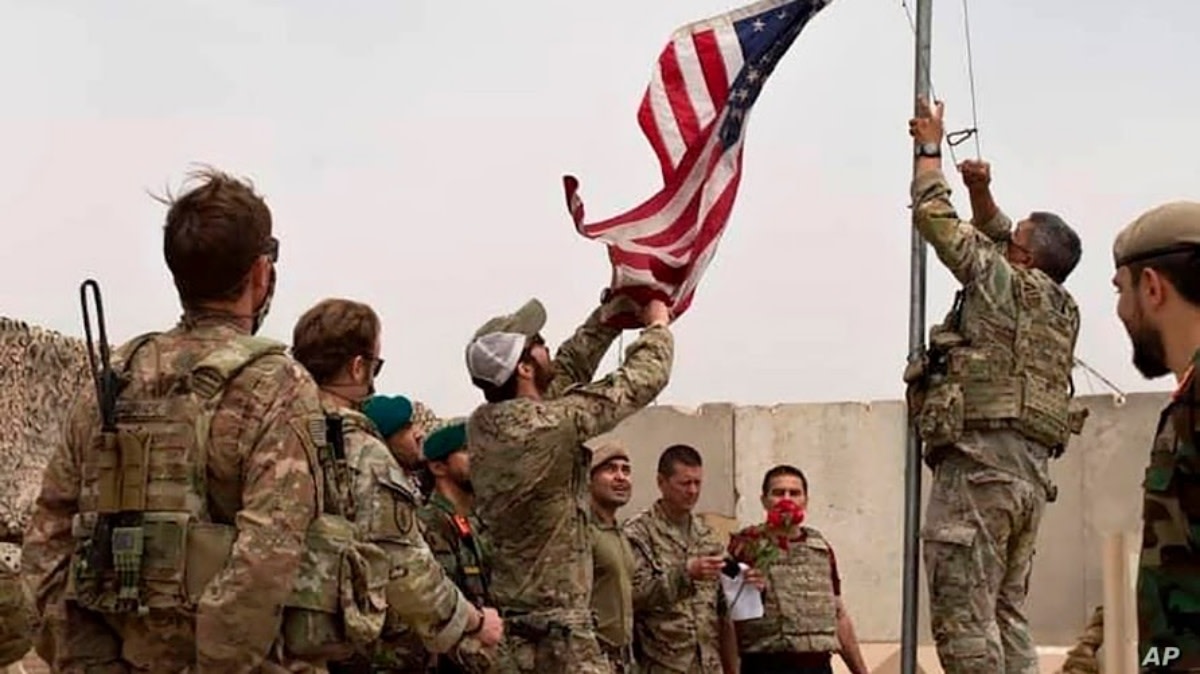American flag is lowered as U.S. soldiers leave Helmand province, southern Afghanistan, May 2, 2021. Photo: Afghan Ministry of Defense Press Office.
By Medea Benjamin and Nicolas J.S. Davies
CODEPINK via LA Progressive
Nine provincial capitals in Afghanistan have fallen to the Taliban in six days – Zaranj, Sheberghan, Sar-e-Pul, Kunduz, Taloqan, Aybak, Farah, Pul-e-Khumri and Faizabad – while fighting continues in four more – Lashkargah, Kandahar, Herat & Mazar-i-Sharif. U.S. military officials now believe Kabul, Afghanistan’s capital, could fall in one to three months.
It is horrific to watch the death, destruction and mass displacement of thousands of terrified Afghans and the triumph of the misogynist Taliban that ruled the nation 20 years ago. But the fall of the centralized, corrupt government propped up by the Western powers was inevitable, whether this year, next year or ten years from now.
President Biden has reacted to America’s snowballing humiliation in the graveyard of empires by once again dispatching U.S. envoy Zalmay Khalilzad to Doha to urge the government and the Taliban to seek a political solution, while at the same time dispatching B-52 bombers to attack at least two of these provincial capitals.
In Lashkargah, the capital of Helmand province, the bombing has already reportedly destroyed a high school and a health clinic. Another B-52 bombed Sheberghan, the capital of Jowzjan province and the home of the infamous warlord and accused war criminal Abdul Rashid Dostum, who is now the military commander of the U.S.-backed government’s armed forces.
Meanwhile, the New York Times reports that U.S. Reaper drones and AC-130 gunships are also still operating in Afghanistan.
The rapid disintegration of the Afghan forces that the U.S. and its Western allies have recruited, armed and trained for 20 years at a cost of about $90 billion should come as no surprise.
The rapid disintegration of the Afghan forces that the U.S. and its Western allies have recruited, armed and trained for 20 years at a cost of about $90 billion should come as no surprise. On paper, the Afghan National Army has 180,000 troops, but in reality most are unemployed Afghans desperate to earn some money to support their families but not eager to fight their fellow Afghans. The Afghan Army is also notorious for its corruption and mismanagement.
The army and the even more beleaguered and vulnerable police forces that man isolated outposts and checkpoints around the country are plagued by high casualties, rapid turnover and desertion. Most troops feel no loyalty to the corrupt U.S.-backed government and routinely abandon their posts, either to join the Taliban or just to go home.
When the BBC asked General Khoshal Sadat, the national police chief, about the impact of high casualties on police recruitment in February 2020, he cynically replied, “When you look at recruitment, I always think about the Afghan families and how many children they have. The good thing is there is never a shortage of fighting-age males who will be able to join the force.” (Continued)

